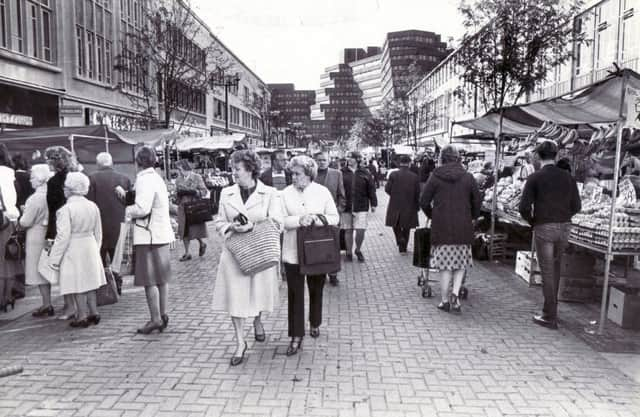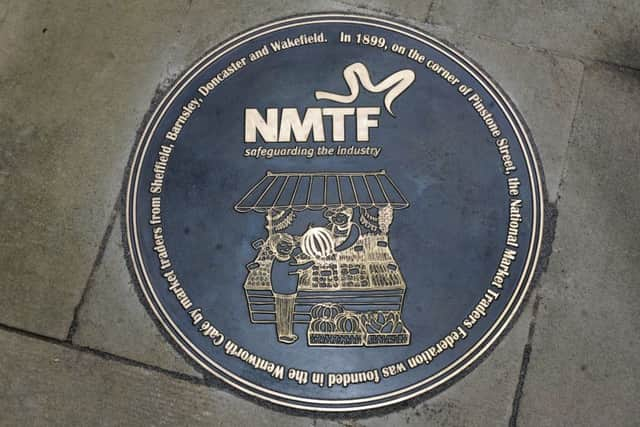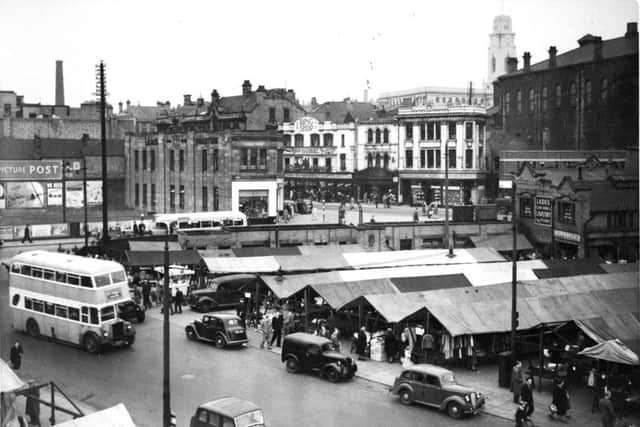How they cornered the market in getting their way


It was the last year of the 19th century but the beginning of the modern markets era, their tenancies newly passed from private landowners to the municipality.
Yesterday, as they unveiled a plaque in the centre of Sheffield, opposite where the cafe had stood, there was a consensus that while much had improved, some problems were perennial.
Advertisement
Hide AdAdvertisement
Hide Ad“Those leaky roofs – still a bone of contention,” said Chris Savage, project manager for the National Market Traders’ Federation.


It was his organisation that the stallholders of South Yorkshire had founded on that day in 1899.
“They were from market tenants’ associations in Yorkshire and they all felt the need for a collective voice to lobby for their rights and add weight to their calls for changes,” Mr Savage said.
The railway cloakrooms were a particularly pressing issue, for they all came in by steam train. They got their way – as the old century fell away, so did the fees.
Advertisement
Hide AdAdvertisement
Hide AdThere are an estimated 32,000 market traders in the UK, and around two in three are members of the Federation, which now has its national headquarters in Barnsley.


But it was Pinstone Street, the original site of Sheffield market, where the Peace Gardens now stand, that was the focus for yesterday’s short ceremony. It followed the annual conference of the Federation at the Novotel, five minutes away.
Sheffield’s Lord Mayor, Councillor Anne Murphy, wore a large pink hat as she helped to unveil the roundel that now commemorates the first meeting. Word of it had evidently spread quickly, for by 1905, some 220 members from across Yorkshire had joined. Six years later, it went national.
“In Sheffield, the Dukes of Norfolk had run the city markets for hundreds of years, and it was said they collected their tolls only twice yearly,” Mr Savage said.
Advertisement
Hide AdAdvertisement
Hide Ad“But during the industrial revolution, the local authorities in a lot of the big cities up north bought the rights from the landowners and began to exercise control, to be able to more effectively feed the local population.”


Sheffield, whose market halls, slaughterhouses and outdoor stalls were concentrated around the old Castle area, was teeming with traders of every kind, and such was their collective muscle that when the First World War came, the Federation was able to extract a guarantee from the council’s markets committee for a new stall for every trader who had given one up to go to fight.
Its members also secured a concession from the private rail companies which allowed them each to carry up to 60lbs of their stock, free of charge. The Federation itself settled in Sheffield’s Corn Exchange. When that burned down in 1947, Its first recorded location is in Sheffield’s Corn Exchange. When that was destroyed by fire in 1947, it moved to a pub and then to rented offices in Chapeltown and Spital Hill.
“There is a very strong market heritage in Yorkshire,” Mr Savage said. “Many northern towns saw their market halls especially as badges of civic pride.”